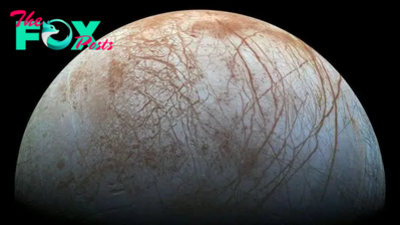Science
Jupiter's elusive 5th moon caught crossing the Great Red Spot in new NASA images
NASA's Juno spacecraft has spotted the elusive fifth moon of Jupiter transiting the giant planet's Great Red Spot, giving astronomers a rare view of this small but intriguing natural satellite.
Jupiter's most famous moons are its four Galilean satellites: Io, Europa, Ganymede and Callisto, each of which is several thousand kilometers wide. Jupiter's fifth moon to be discovered, and the fifth-largest of the planet's 95 known moons, is Amalthea. It was found in 1892 by Edward Emerson Barnard, an American astronomer who was an outstanding visual observer. He also discovered Barnard's Star, as well as a host of dark nebulae.
Despite being Jupiter's fifth-largest moon, Amalthea has fairly modest dimensions. Irregularly shaped like a potato, its long axis stretches just 155 miles (250 kilometers), and its narrowest point spans a mere 79 miles (128 km). Gravity measurements by NASA's Galileo spacecraft in the early 2000s deduced that Amalthea is little more than a loosely held together rubble pile rather than solid rock.
Related: NASA reveals 'glass-smooth lake of cooling lava' on surface of Jupiter's moon Io
Now, Juno has spied Amalthea for the first time, during the spacecraft's 59th close flyby of Jupiter, which occurred on March 7 of this year. Juno's orbit is a long, looping one around the gas giant, with a close encounter (referred to as a "perijove") every 53 Earth days; it was meant to move into a shorter orbit, but a misfiring engine caused by faulty valves means that Juno is staying where it is for the duration.
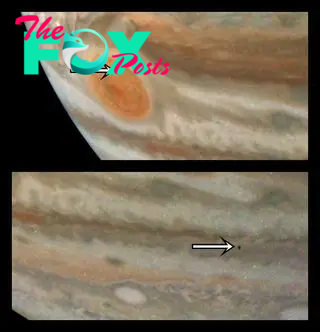
Juno spotted Amalthea as a tiny black speck set first against one of Jupiter's ruddy, dark cloud belts and then transiting the Great Red Spot itself. The scale is incredible; the Great Red Spot is a vast anticyclonic storm that's currently 7,767 miles (12,500 km) across, while tiny Amalthea is pictured 112,500 miles (181,000 km) above Jupiter's cloud tops.
In fact, Amalthea has the third-shortest orbit of any of Jupiter's moons, revolving around the giant planet every 0.5 Earth days on the inside track relative to volcanic Io's orbit. It shines at magnitude +14, and with it being so close to the glare of Jupiter, Barnard did an incredible job discovering it. Suffice it to say, Juno's task is much easier.
-

 Science11h ago
Science11h agoChina opens Chang'e 6 return capsule containing samples from moon's far side
-
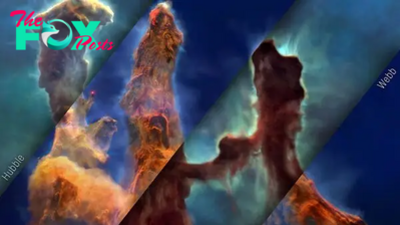
 Science11h ago
Science11h agoSpace photo of the week: James Webb telescope gives the 'Pillars of Creation' a stunning 3D makeover
-

 Science1d ago
Science1d agoWhy is mystery object Cygnus X-3 so bright? Astronomers may now have the answer
-
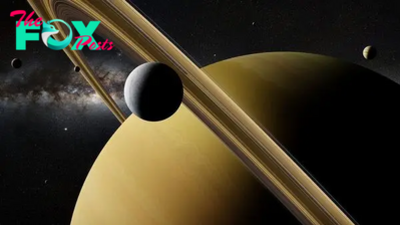
 Science1d ago
Science1d agoHow many moons are in the solar system?
-

 Science1d ago
Science1d agoNewly discovered asteroid larger than the Great Pyramid of Giza will zoom between Earth and the moon on Saturday
-
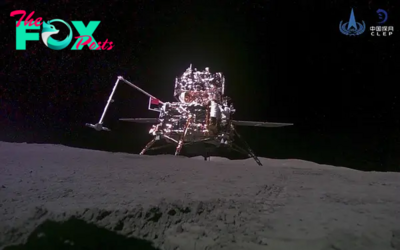
 Science2d ago
Science2d agoA Chinese Lunar Probe Returns to Earth With the World’s First Samples From the Far Side of the Moon
-

 Science2d ago
Science2d agoSpace junk: How broken satellites are creating a garbage crisis in the sky
-

 Science2d ago
Science2d agoShattered Russian satellite forces ISS astronauts to take shelter in stricken Starliner capsule
